|
Related FAQs: Merulinids 1, Merulinids 2, & FAQs on: Merulinid Identification, Merulinid Behavior, Merulinid Compatibility, Merulinid Selection, Merulinid Systems, Merulinid Feeding, Merulinid Disease, Merulinid Reproduction/Propagation,
& Stony/True Coral,
Coral System Set-Up, Coral System Lighting, Stony Coral Identification, Stony Coral Selection, Coral Placement, Foods/Feeding/Nutrition, Disease/Health, Propagation, Growing Reef Corals, Stony Coral Behavior, SPS Identification, SPS Behavior, SPS
Compatibility, SPS Selection,
SPS Systems, SPS Feeding, SPS
Disease, SPS
Reproduction,
Related Articles: Small
Polyp Stony Corals, Stony or True Corals,
Order Scleractinia, Dyed Corals,
/The Best Livestock For Your Reef Aquarium:
Corals of the Family
Merulinidae,
Part 2
Part 1: To Echinopora
Part 3: Genus Merulina
Part 4: To Genus Paramontastrea
Part 5: Genus Pectinia
|
|
|
Bob Fenner
|
|
Genus Hydnophora Fischer de Waldheim 1807, Horn, Velvet, Knob
Coral. Have short tentacles that originate at base of their
hydnophores. More than capable of strongly stinging other sessile
invertebrates. Eager feeders on sizeable meaty foodstuffs. Easily
reproduced through fragmentation of healthy colonies. /WA Corals: massive,
encrusting or branching • highly fused corallite structures (hydnophores) where
septa converge to form a pyramid • may be hidden by tentacles
Bigger PIX:
The images in this table are linked to large
(desktop size) copies. Click on "framed" images to go to
the larger size. |
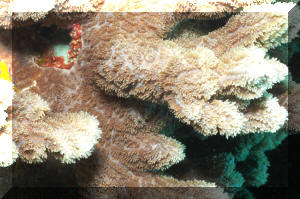
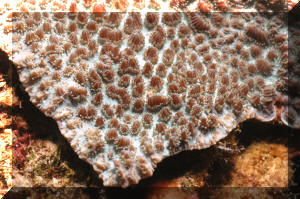 |
| Hydnophora exesa (Pallas 1766), Occurs
as both encrusting and branching forms. These colonies open during
the day (wild ones only at night) in captivity. |
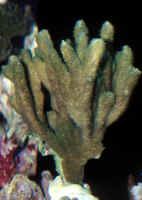 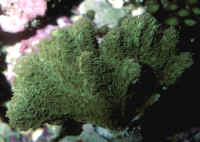
|
| Verticals (Full/Cover
Page Sizes Available) |
%20MD.JPG) |
| Hydnophora grandis Gardiner 1904. Thicker
mostly circular branching, more prominent mounds (hydnae) for bases. This colony in
Bunaken/Sulawesi/Indo. |
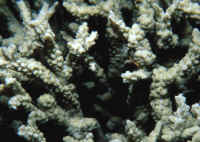
|
Bigger PIX:
The images in this table are linked to large
(desktop size) copies. Click on "framed" images to go to
the larger size. |
|
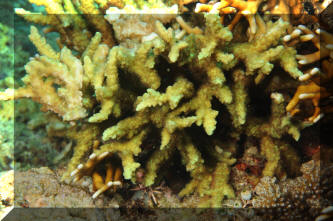
|
| Hydnophora rigida (Dana 1846). Thin,
flattened, pointed branches. The first two images below are a
smaller colony on the reef flat and one further down in slower,
less lit water in Fiji, and the last a close-up in
Bunaken/Sulawesi/Indo. |
|
|

